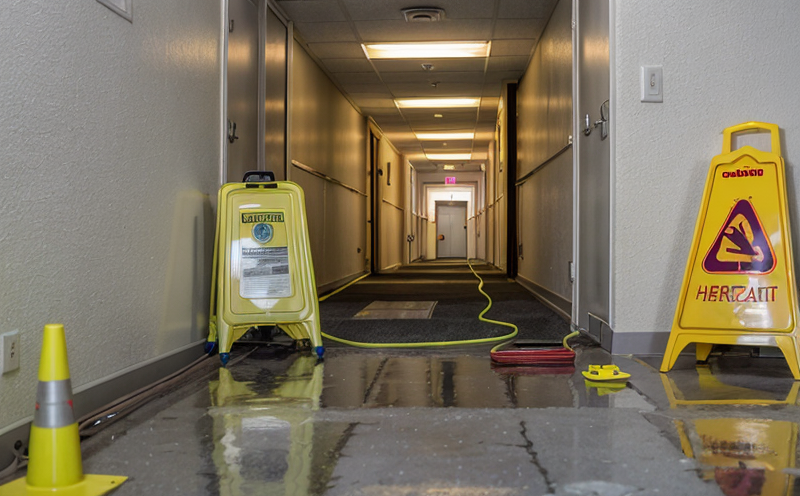API RP 505 Hazardous Area Classification Testing for Petroleum Facilities
The API RP 505 standard provides guidance on how to classify hazardous areas in petroleum facilities. This classification is crucial for ensuring the safety and compliance of operations within these environments, which are inherently dangerous due to flammable gases or vapors.
Hazardous area classification involves dividing an installation into zones based on the frequency and duration of release of a specified gas, vapor, mist, or dust in air. This division is critical for selecting appropriate equipment and ensuring safe design and operation. The API RP 505 standard focuses specifically on petroleum facilities and uses criteria that are internationally recognized.
The classification process typically involves several steps:
- Gas Detection: Detecting the presence of flammable or explosive gases in the environment.
- Zone Determination: Defining the zones based on the frequency and duration of gas release. Zones are categorized as Zone 0, Zone 1, or Zone 2, with Zone 0 being the most hazardous.
- Equipment Selection: Choosing equipment that is suitable for the classified zone to prevent ignition sources.
- Installation and Maintenance: Ensuring proper installation and regular maintenance of safety systems and equipment.
The testing process outlined in API RP 505 ensures that all these steps are followed meticulously, providing a reliable basis for safe operations. This standard is particularly important for industries where the risk of fire or explosion due to flammable gases is high, such as refineries, petrochemical plants, and storage facilities.
The testing process involves various stages:
- Initial Assessment: Conducting a detailed assessment of the facility’s potential hazards.
- Sampling and Analysis: Taking samples from different areas of the facility to analyze gas concentrations.
- Testing Equipment: Using specialized equipment to ensure that all measurements are accurate and reliable.
- Zone Definition: Defining the zones based on the results of the sampling and analysis.
- Documentation: Preparing detailed documentation outlining the classification process, zone definitions, and recommended safety measures.
The importance of accurate hazardous area classification cannot be overstated. A misclassified zone can lead to serious accidents, posing risks not only to personnel but also to the environment. By adhering to API RP 505 guidelines, facilities can ensure that they meet international standards and regulations, thereby enhancing safety and compliance.
API RP 505 is widely recognized in the petroleum industry for its comprehensive approach to hazardous area classification. It provides a clear framework for conducting tests and ensuring that all areas are properly classified according to their risk level. This standard is essential for maintaining a safe working environment, preventing accidents, and complying with international regulations.
By following API RP 505 guidelines, facilities can ensure they meet the highest standards of safety and compliance in hazardous environments. The testing process is rigorous and detailed, ensuring that all areas are classified accurately and reliably. This not only enhances safety but also helps facilities maintain their reputation for excellence in operational practices.
Applied Standards
The API RP 505 standard is closely aligned with several international standards, including:
- ISO/IEC 17025: General Requirements for the Competence of Testing and Calibration Laboratories: Ensures that laboratories providing testing services meet the highest quality requirements.
- ASTM F3069-18: Practice for Classification and Zoning of Hazardous Locations for Petroleum Facilities: Provides a framework for classifying hazardous locations in petroleum facilities based on gas, vapor, mist, or dust concentrations.
- IEC 60079-24: Explosive atmospheres - Part 24: Classification of areas and zones (for use with IEC 60079-1): Offers guidance on the classification of areas where explosive atmospheres may occur, which is critical for selecting appropriate equipment.
- EN 50283: Electrical installations in potentially explosive atmospheres - Particular aspects: Provides specific requirements and recommendations for electrical installations in potentially explosive environments.
The API RP 505 standard ensures that all classifications are conducted with the utmost accuracy, using these internationally recognized standards as a foundation. This collaboration with other authoritative bodies enhances the reliability of the classification process and ensures compliance with global best practices.
Benefits
The API RP 505 hazardous area classification testing offers numerous benefits to petroleum facilities:
- Enhanced Safety: Properly classified zones reduce the risk of fire and explosion, enhancing overall safety for personnel.
- Compliance with Regulations: Ensures that all operations comply with international standards and regulations, reducing legal risks.
- Improved Equipment Selection: Accurate classification allows facilities to select appropriate equipment suitable for the classified zone, ensuring safe operation.
- Cost Efficiency: By preventing accidents and minimizing downtime, proper classification can lead to significant cost savings in the long run.
- Informed Decision-Making: Provides detailed documentation that supports informed decisions regarding safety measures and operational practices.
- Environmental Protection: Reduces the risk of environmental damage by preventing accidental releases of hazardous materials.
The testing process not only ensures compliance with regulations but also contributes to a safer, more efficient operation. By adhering to API RP 505 guidelines, facilities can enhance their safety protocols and operational effectiveness, ultimately leading to greater reliability and lower risk.





